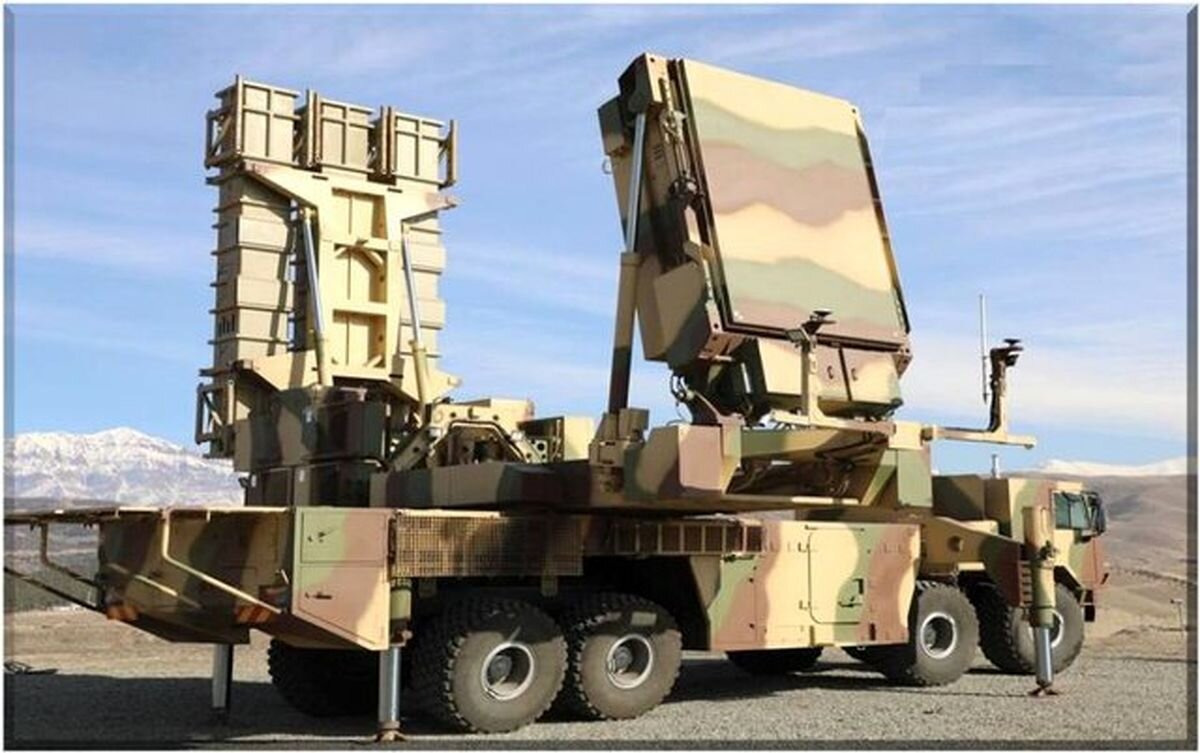Iran unveils domestically-manufactured defense systems

TEHRAN- The Iranian Ministry of Defense has showcased a powerful anti-ballistic missile (ABM) defense system and a low-altitude air defense (LAAD) system that were totally designed and constructed by the country’s military engineers and professionals.
The new arrivals were introduced during a ceremony in Tehran on Saturday, attended by Defense Minister Brigadier General Mohammad-Reza Ashtiani.
The homegrown Arman (Aspiration) anti-ballistic missile (ABM) defense system, also known as Tactical Sayyad (Hunter), is said to be capable of detecting and tracking 24 targets at a distance of 180 kilometers (111 miles) and dealing with six to twelve targets at the same time at a range of 120 kilometers (74.5 miles).
It is reported to have shorter-range self-protection capabilities than the Khordad-3 and Khordad-15 systems.
The self-protection system is installed in one of the missile turrets of the Arman ABM defense system, rendering the weapon resistant to probable low-altitude attacks.
The new air defense system also has more mobility since its radars and missile launchers are integrated into a single vehicle.
The Azarakhsh (Thunderbolt) low-altitude defensive system is reported to provide close-in, low-altitude, surface-to-air weapon fires in defense of forward battle zones, maneuver forces, critical regions, facilities, and/or units engaged in special or autonomous operations.
Iran for the first time showcased a replica of the Tactical Sayyad air defense system at the International Military Forum ARMY-2023 in Russia in August 2023.
In recent years, Iranian military scientists and engineers have achieved great advances in the production of a wide spectrum of indigenous equipment, allowing the armed forces to operate independently.
Iranian officials have frequently stated that the country would not hesitate to develop its military capabilities, particularly missile power, which is only intended for defense, and that Iran's defense capabilities will never be negotiated.
Ayatollah Seyed Ali Khamenei, the Leader of the Islamic Revolution, has consistently urged for measures to preserve and strengthen Iran’s defensive capabilities.
Last year, Iranian Defense Minister Ashtiani noted that Tehran intends to unveil a brand-new cutting-edge air defense system in the near future.
The minister said that only Iranian military experts were involved in the design and production of the domestically produced military equipment.
General Ashtiani went on to add that the development of this technology is consistent with the Defense Ministry’s policy of surprising the adversary and developing several scenarios for potential future struggles.
According to the Iranian general, the Defense Ministry was successful in designing and manufacturing a number of surface-to-air missile (SAM) systems, including Bavar-373 (Belief-373), Khordad 15, Talaash (Endeavor), and Mersad (Ambush).
Ashtiani also stressed that integrating modern missile defense systems and boosting deterrent power would enable Iran diversify its air defense capabilities and increase the engagement capabilities of its armed forces.
He praised the Defense Ministry for having 400 innovation centers and 4,500 researchers, making it to rank first in the country.
“With such a huge capacity, a thousand projects are currently underway which only a small portion is reported to the media,” he added.
Brigadier General Ashtiani noted that his ministry is working to improve military prowess by increasing the production of both military and civilian items and services, boosting the capability of missiles, drones, air defense, and electronic warfare, and pursuing defense diplomacy with a focus on export capacity building.
He also stressed that “due to the efforts of the Defense Ministry, we registered a threefold increase in exports, a twofold rise in the production of civilian goods and services, and an 81 percent increase in military production last year.”
“This path will continue with more strength and endeavor this Persian calendar year which is named ‘Inflation Control; Growth in Production’,” he continued.
Ashtiani pointed out that there are no restrictions on Iran purchasing military equipment. “No, it is not prohibited, wherever we need. We do not feel any restrictions in providing the needs or exporting.”
A senior Iranian military official asserted in last August that the nation’s indigenously produced Tactical Sayyad (Hunter) air defense system could intercept several aircraft threats at a range of more than 100 kilometers.
The indigenous system was defined by Afshin Naderi-Sharif, Iran’s Deputy Defense Minister for research and industrial affairs, as a deployable medium-range ground-based system with unique advantages over its rivals.
In contrast to the Khordad-3 and Khordad-15 systems, according to Naderi-Sharif, the system is equipped with short-range self-protection capabilities.
He emphasized that the self-protection technology is installed in one of the air defense system’s missile turrets, rendering the weapon resistant to any low-altitude assaults.
Leave a Comment